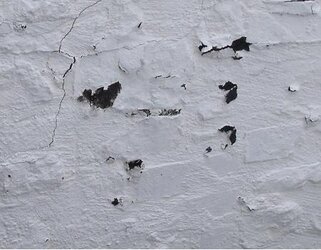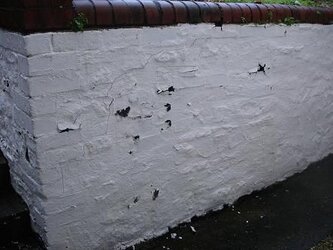Spinney
Bimbleur extraordinaire
- Location
- Back up north
We have an external garden retaining wall (i.e. not part of the house). This is brick with a very thin rendering over parts of it. It is holding back a gravelled area that belongs to the flat above.
Part of it was painted last summer, but we ran out of paint and left the rest. There are no problems with this bit of wall.
We painted the rest last autumn, but now bits of the render/mortar are falling off. Some of this may have been loose to start with, but not all of it, I think. This is only happening on the bit we painted most recently. It would be too much of a coincidence if some change in the wall co-incided with the point at which we stopped painting in the summer, so it must be something to do with the conditions in which we painted it (we used exactly the same brand of exterior masonry paint both times).
Any idea why this happened? Is it anything to do with the paint possibly being applied when the wall was too wet? I don't think the weather was frosty at the time. If it's to do with being wet, the wall behind the good paint will also get wet from water soaking through from the ground above, so why hasn't that started to lose its mortar?
The good bit is on the right in the bottom pic, the disintegrating bit on the left.
Part of it was painted last summer, but we ran out of paint and left the rest. There are no problems with this bit of wall.
We painted the rest last autumn, but now bits of the render/mortar are falling off. Some of this may have been loose to start with, but not all of it, I think. This is only happening on the bit we painted most recently. It would be too much of a coincidence if some change in the wall co-incided with the point at which we stopped painting in the summer, so it must be something to do with the conditions in which we painted it (we used exactly the same brand of exterior masonry paint both times).
Any idea why this happened? Is it anything to do with the paint possibly being applied when the wall was too wet? I don't think the weather was frosty at the time. If it's to do with being wet, the wall behind the good paint will also get wet from water soaking through from the ground above, so why hasn't that started to lose its mortar?
The good bit is on the right in the bottom pic, the disintegrating bit on the left.


